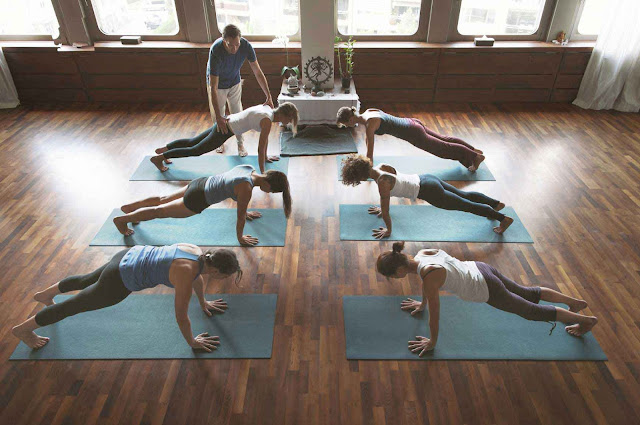Why do Pilates classes work and why?
Pilate’s classes are everywhere and are used as a form of staying fit as well as for rehabilitation. Fitness Pilates as well as Rehabilitation Pilates classes both use the same exercises.
The exercises are repeated 8 to 10 times to generate muscle strength and endurance without exhausting or damaging muscle fibers. The exercises also focus on improving flexibility and re-aligning the body’s structure improving balance and posture as well as improving movement and co-ordination.
Pilate’s essential needs to follow the “rules” Weather a Mat Pilates class or a Reformer Pilates class, private or group each exercise must consider and incorporate 5 essential concepts. Head or cervical placement, Shoulder stability, rib cage placement, hip stability and breathing technique. The position of the body adapts to the exercises but conforms to the standard.
The breathing technique is paramount to carrying out Pilates exercise correctly. The breathing technique contracts the traverse muscles which is a core muscle that stabilities the lumbar – pelvic region amongst other functions. Research by Porterfield and DeRosa has shown that forced exhalation during exercise can reduce the sensation of fatigue and effort.
Pilates was developed by joseph Pilates as a method to strengthen his frail body. To develop this method Joseph Pilates studied many different forms of exercise and movement from Yoga to meditation. He used the Pilates exercises on himself and saw a huge difference in his physical abilities. During World War 1 he worked in a hospital helping patients with their recovery process suing his Pilates exercises as opposed to more traditional rehabilitation exercises favored at the time.
While working with patients he started to use the bed springs to create resistance and found the results not only positive in terms of recovery times but more effective that previous floor based Pilates Barcelona exercises he had been working with up to that point. The springs were used as a reformer machine is used. The springs support the patient allowing for the patient to perform Pilate’s exercises with none or a reduced amount of pain or even the support allows for a better range of movement encouraging health and recover.
One of the main differences between Pilates and other rehabilitation exercise methods was that Pilates allowed the patient to start exercising sooner. In these days the though process was that a patient recovered then started rehabilitation. Joseph Pilates rejected this idea and engaged patients as soon as was reasonable possible which the doctors and he felt greatly contributed to his success. Now-days we encourage rehabilitation early on in the recover process.
Joseph Pilates took these finding and moved to America to continue working on his technique and adapting it to work with athletes and people who wanted to get stronger, leaner and more flexible.
In time Pilates become famous worldwide and in 2011. Pilates was not understood at first.
Pilates was initially thought of a form of Yoga, or in fact Yoga. However, the success of Pilates and the endorsement of Pilates by American celebrities soon allowed Pilates to be known as a fitness and rehabilitation technique in its own right. Forward thinking cities such as Barcelona now boast many Pilates studios offering both Mat and Reformer classes.
As Pilates has become more popular there have been many spin offs or fusion classes. In 2009 Yoga-laties was often offered and has reasonable success in the USA and the UK. However, these fusion Pilates classes were rejected in cities like Barcelona where contemporary and classic Pilates prevailed.
Today Pilate’s lovers often opt for a Barre Pilates classes. A ballet based Pilate’s class performed with a ballet bar and long graceful movements. Yoga-laties and Barre Pilates have gained much more popularity in northern European countries and the USA than in Southern European countries and cities such as Barcelona or Milan
In conclusion there has been a lot of interest from manual therapists such as Osteopaths and Physiotherapists as well as fitness instructors a like to adopt Pilates. Research has shown that Pilates in Barcelona can improve posture, create core stability, strengthen, and improve flexibility amongst other benefits. For some going to a Pilate’s class is simply an enjoyable way to exercise.
For more information please visit: https://www.simplybepilates.com




Comments
Post a Comment